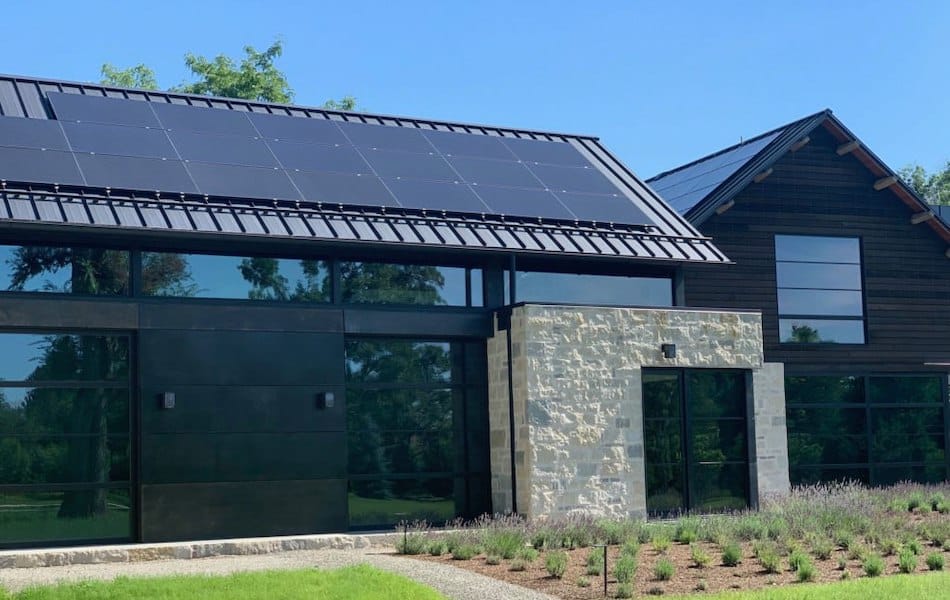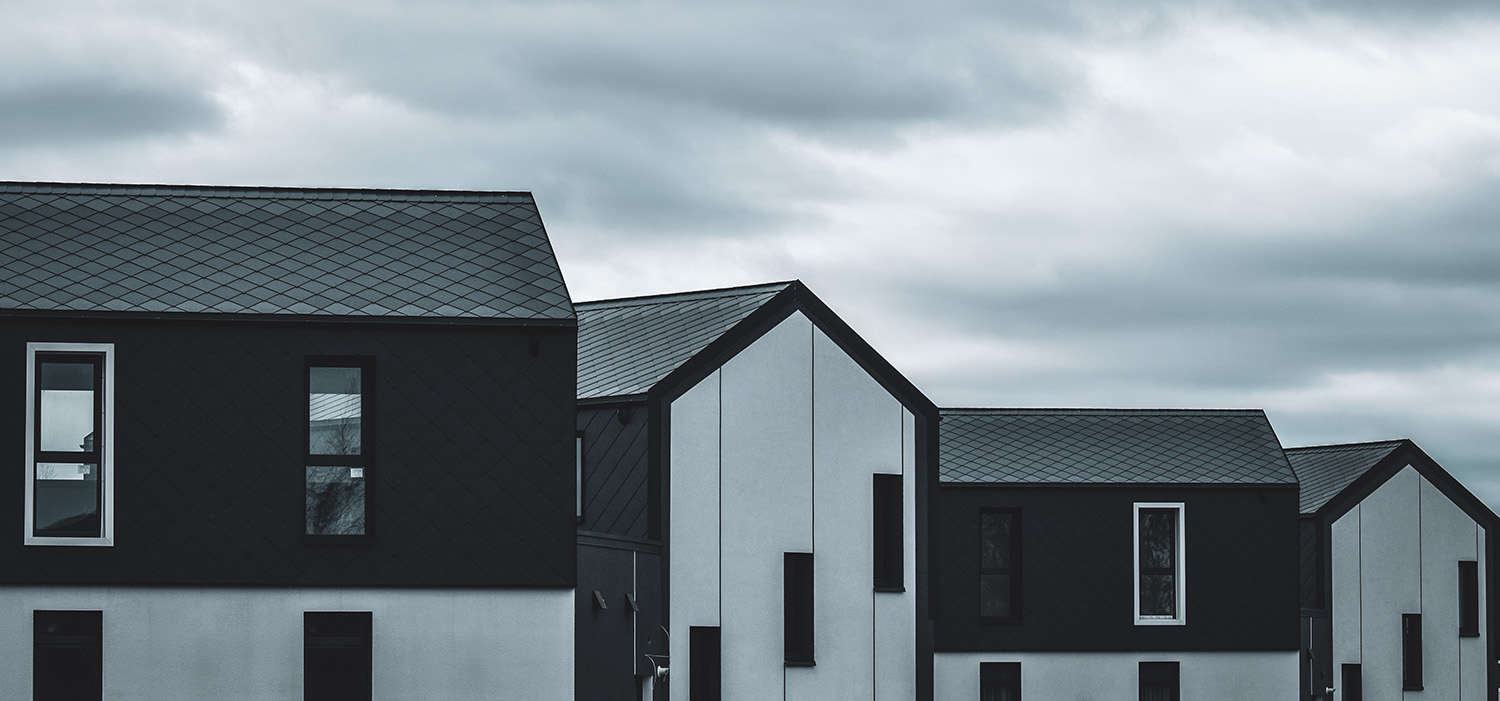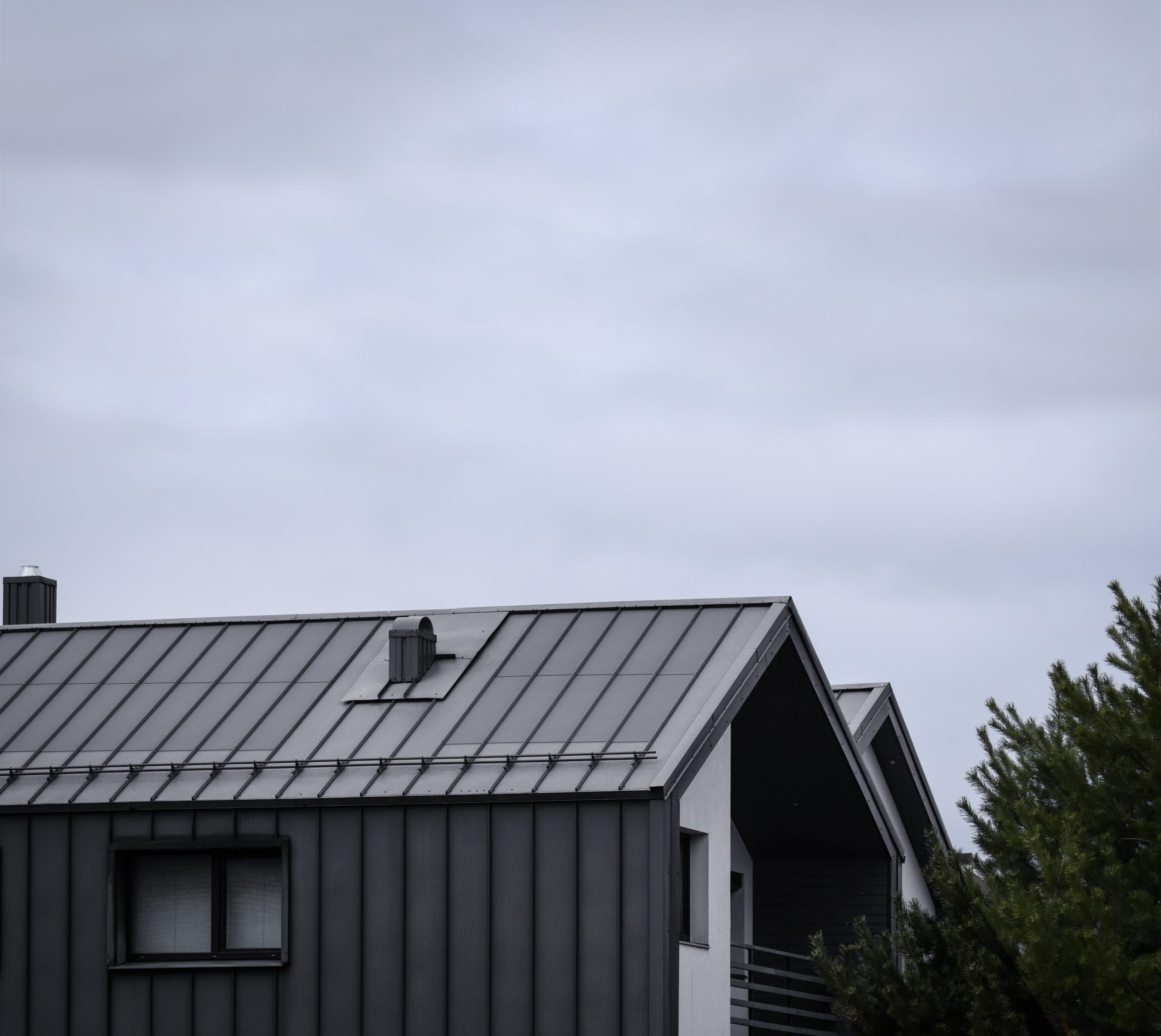Solar energy is becoming an essential part of modern buildings, but choosing the right system can be confusing. The two main types are standard photovoltaic (PV) panels and integrated PV systems -and they work quite differently.
Standard PV panels are what most people picture when they think of solar panels. They’re mounted on top of your existing roof using metal frames and fixings. This tried-and-tested method is popular because it’s relatively straightforward to install on almost any roof, especially when you’re adding solar to an existing building.
On the other hand, integrated PV systems are designed to become part of the roof itself. Instead of placing panels on top, these systems replace traditional roofing materials with solar ones. Products like Laumė Roof or Eglė Tile combine the role of protecting your home with generating electricity -all in a sleek, discreet design.
Deciding which is right for you isn’t just about energy production. It’s about how you want your building to look, how much maintenance you’re willing to manage, and the kind of investment that suits your project. In this article, we’ll break down the key differences to help you make the best choice.

What is Standard PV?
Standard photovoltaic (PV) panels are the most common solar solution, typically mounted on top of an existing roof or structure. They are well-proven, widely available, and known for their efficiency and straightforward installation. However, like any technology, they also have trade-offs that are worth considering. Learn more about the pros and cons below.
Pros of Standard PV Panels
- Flexible installation on almost any roof, due to fixing systems that have been developed and improved over many years.
- Lower cost – in 2025, quality standard PV modules typically cost around 0.15 cents per watt peak (Wp), largely due to mass production from China.
- Easy to replace or upgrade, since standard panels are mounted on top of the roof using simple profiles, swapping or expanding your system is quate easy.
Cons of Standard PV Panels
- Not the best choice if you care about aesthetics – mounting frames, visible wiring, and hardware can disrupt the clean look of your roof.
- Added weight can put stress on older roofs, as the panels plus fixings, rails, and wiring increase the load.
- Separate roofing and solar systems mean more components to maintain, since the roof and solar panels are separate elements.
What is Integrated PV?
Integrated photovoltaic (BIPV) systems take a different approach by blending directly into the building itself – replacing parts of the roof or façade with energy-generating materials. This creates a more seamless look and can reduce the need for additional construction materials. Still, integrated solutions come with their own advantages and limitations. See the key points below.
Pros of Integrated PV Panels
- Seamless integration – solar modules replace traditional roofing materials, creating a smooth, frameless surface that suits both modern and historic buildings.
- Dual purpose – acts as both a roof and a power generator, reducing materials and simplifying installation.
- Built to last – integrated systems are designed to last as long as your roof, often outliving conventional roofing materials, which cuts down on maintenance.
- More sustainable – fewer materials overall and less waste compared to combining standard solar panels with traditional roofing.
- Additional subsidies for Made-in-EU BIPV products, with increasing subsidy schemes across EU.
- Installation is as straightforward as fitting a conventional building element – the only difference comes from connecting the electrical components.
Cons of Integrated PV Panels
- Slightly lower power output per square meter compared to standard PV, because the modules are custom-made to match roofing or facade elements in size, color, and texture, which affects efficiency.
- Generally higher cost than standard panels due to bespoke design and smaller-scale manufacturing compared to mass-produced modules.
- Best suited for new builds or complete roof replacements, retrofitting existing roofs can be complicated and costly.

Which Option Fits Your Project?
Choosing between standard and integrated PV systems depends on your building’s needs, budget, and the look you want to achieve.
If you’re after a budget-friendly option that can be fitted quickly to almost any roof, especially an existing one – standard PV panels are a proven and practical choice. Their well-established mounting systems make them ideal for renovation projects or situations where keeping costs low is important.
If, however, your project values design harmony, long-term durability, and a more sustainable use of materials and you’re either constructing a new building or replacing the entire roof – integrated PV systems such as Laumė Roof, Eglė Tile, or Kovas Tile offer a sleek and seamless finish that becomes part of the architecture while producing clean energy.
The right choice is the one that meets your technical requirements while reflecting your long-term vision for the building. Whether you’re focused on affordability or a seamless architectural result, understanding the benefits and limitations of each approach will help you choose solar that works for your project today and for many years ahead.



